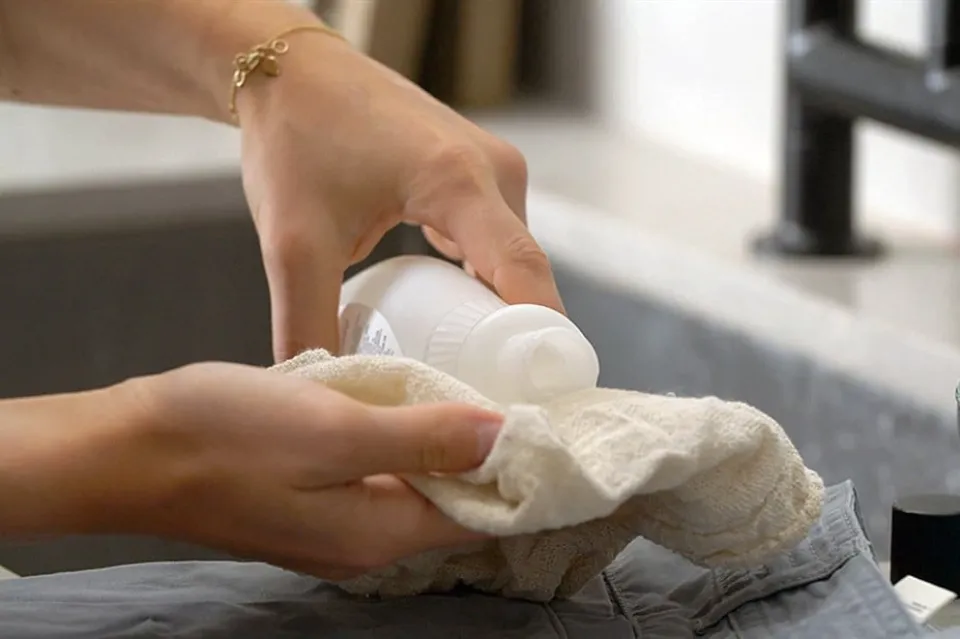
How to Get Vaseline Out of Clothes – Why Is It Hard to Wash Off?
Vaseline can be removed from clothing most quickly by melting the grease with an iron or by applying dish soap and gently scrubbing the grease away.
You will discover what makes Vaseline stains challenging to remove in this article. Six easy stain removal techniques are presented. In the end, you will learn how to remove vaseline from a variety of materials, including carpets, sheets, and silk.
Does Vaseline Stain Clothes?
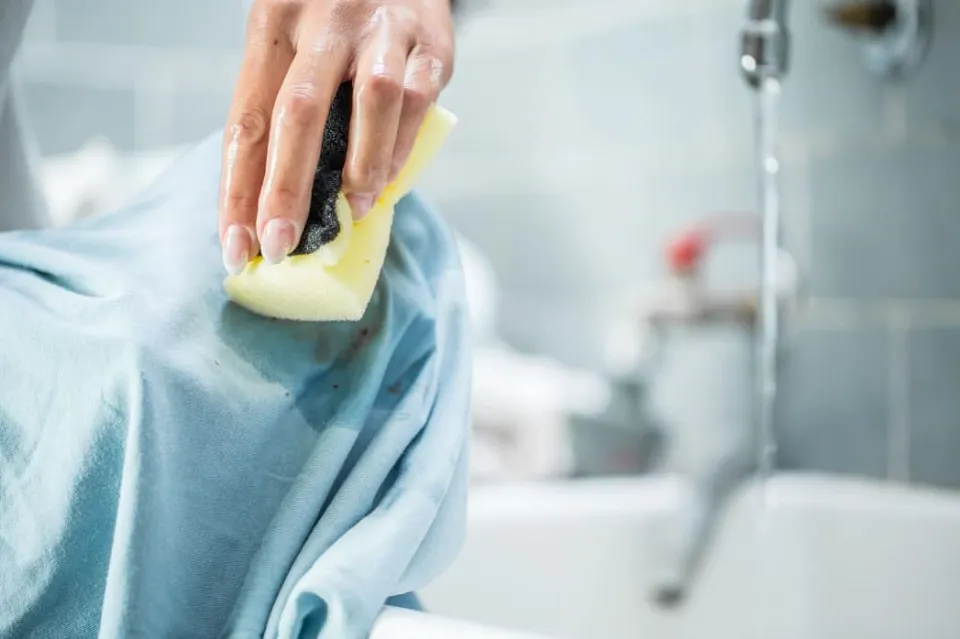
Like many other oil-based ointments or lotions, Vaseline can leave very noticeable stains on clothing. Having said that, you do not need to allow a Vaseline stain to wreak havoc on your clothes! Although it may seem impossible to remove oil and grease stains, you can learn a few quick tips to save your clothes from even the most difficult Vaseline stains.
Petroleum jelly was first offered for sale in the 1800s under the brand name Vaseline. Similar to Aquaphor, other brands may also contain waxes and/or mineral oils but contain a higher percentage of petroleum.
These goods have uses for health, such as moisturizing dry skin and easing chapped lips. The FDA still recognizes Vaseline as an over-the-counter skin treatment, despite the fact that scientific acceptance of the product’s healing abilities has waned over time.
Read More: Aquaphor vs. Vaseline
You must understand what makes petroleum itself such a difficult stain, regardless of the brand or type of petroleum jelly you prefer to use.
A distinctive hydrocarbon-based semi-solid product is petroleum jelly. Similar to petroleum, it is a byproduct of fossil fuels. This product is a good moisturizer because it is insoluble in water.
Naturally, nothing that won’t dissolve in water will probably be difficult to remove from clothing in the washer. Oil stains on clothing are difficult to get rid of because of this.
Does Vaseline Come Out of Clothes?
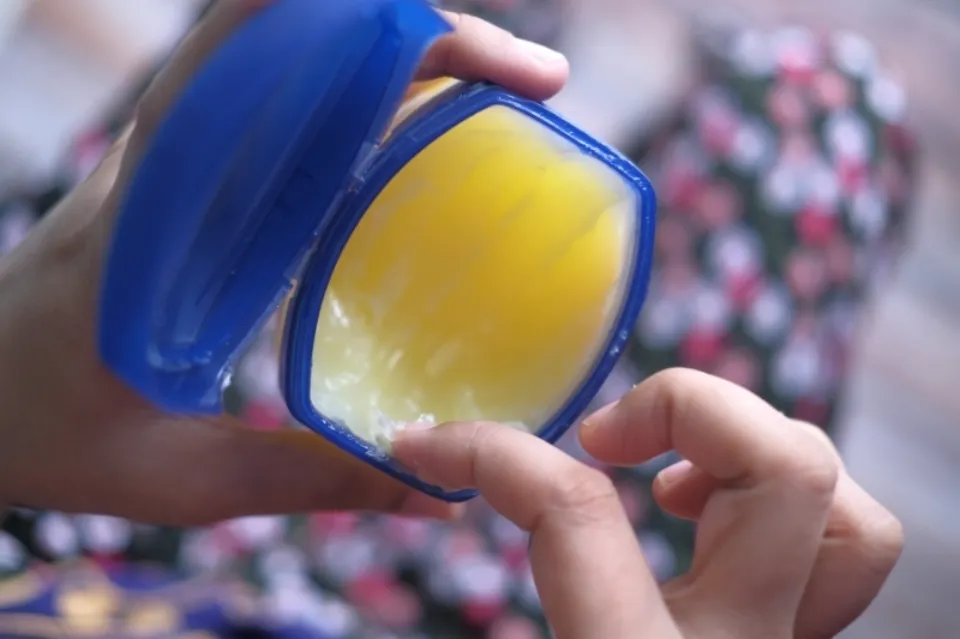
In the right circumstances, clothes can be cleaned of vaseline stains. Petroleum jelly can leave dark stains on fabric that do not come out in a typical washing cycle, similar to the majority of grease or oil-based stains. Some industrial stain removers are made for protein-based stains and won’t even touch oil stains, while others are designed for grease stains.
For this reason, you might want to concentrate on cleaning techniques designed specifically to remove oil stains. So what will get petroleum jelly out of clothes?
You already know that water won’t work, so there. However, petroleum jelly is only weakly soluble in alcohol, particularly if you use a strong alcohol like isopropyl alcohol. Additionally, it completely dissolves in riskier substances like turpentine and chloroform, but you should probably avoid using those.
A direct application of dish soap or laundry detergent may work since soap is an excellent degreaser, especially if you can spot the stain while it’s still fresh. Since soap is made to dissolve oil stains and remove grease from dishes and other surfaces, this makes sense.
You can also use heat to melt petroleum jelly into a liquid state and soak it up with a paper towel because of the interesting semi-solid state of petroleum jelly.
Additionally, you can use an absorbent powder to absorb the moisture and easily remove a lot of it from your fabric!
Overall, if you want to get a Vaseline stain out of your clothes, you will need to put in a little effort and use a unique technique designed to get oil out of the fabric. For more information and step-by-step instructions on six effective ways to remove these stains from your clothes, keep reading!
How to Get Vaseline Out of Clothes?
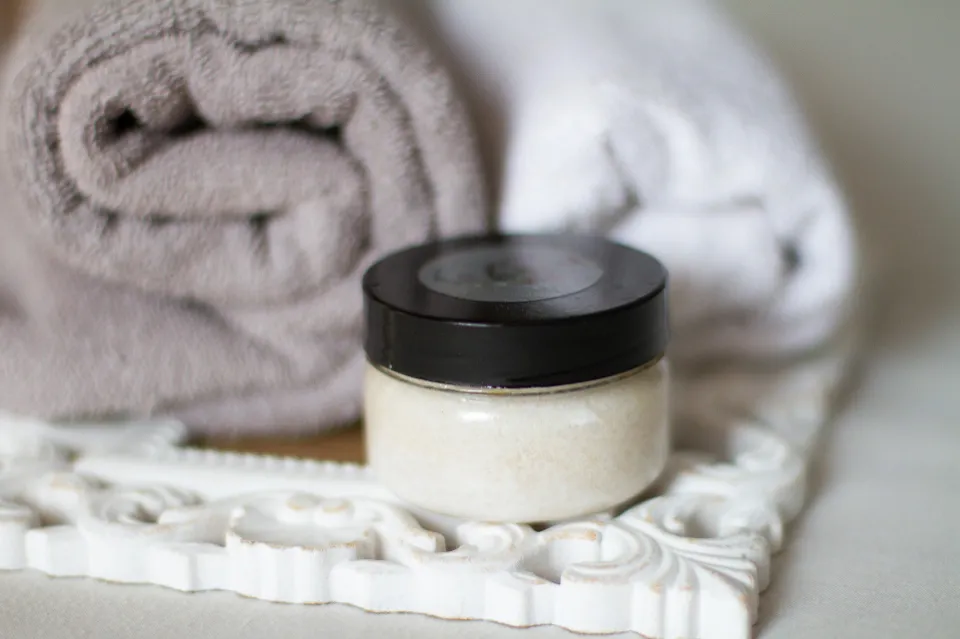
Vaseline stains can be removed from clothing with the help of dish or laundry soap, rubbing alcohol, a hot iron, cornstarch, or even regular white vinegar! The good news is that these methods only require common household items that you probably already have on hand and only require a little bit of time and effort.
As with any stain, the key to success is to remove the stain as soon as you can, before it has a chance to penetrate the fabric. Don’t give up hope if a stain slipped past you in the wash, though.
1. Dish Soap
The best method for removing Vaseline stains from fabric is dish soap. Unfortunately, this approach does require some work, but it is effective! This is due to dish soap’s exceptionally potent ability to dissolve grease.
Without getting too technical, the molecules of dish soap have one end that bonds to oil and one end that bonds to water. As a result, the soap has the ability to engulf small droplets of oil and suspend them in the water. Rinsing the oil away is simple once it separates into tiny droplets in the water.
To use dish soap on Vaseline stains:
- Directly onto the stain, squirt a generous amount of dish soap. You will likely need a teaspoon of a powerful dish soap, such as Dawn, to be exact.
- Gently work the soap over the stain with your fingers to create a lather. Make sure the soap penetrates all the way into the fabric’s fibers. A soft fabric brush could also be used for this, but avoid scrubbing the stain from the inside out to prevent it from getting worse.
- Keep the stain submerged in warm running water after that. Allow the soap and grease to wash out of the fabric’s reverse side.
- Allow the clothing to air dry after removing all of the soap. After it dries, examine it to see if there is still staining.
2. Rubbing Alcohol/Isopropyl Alcohol
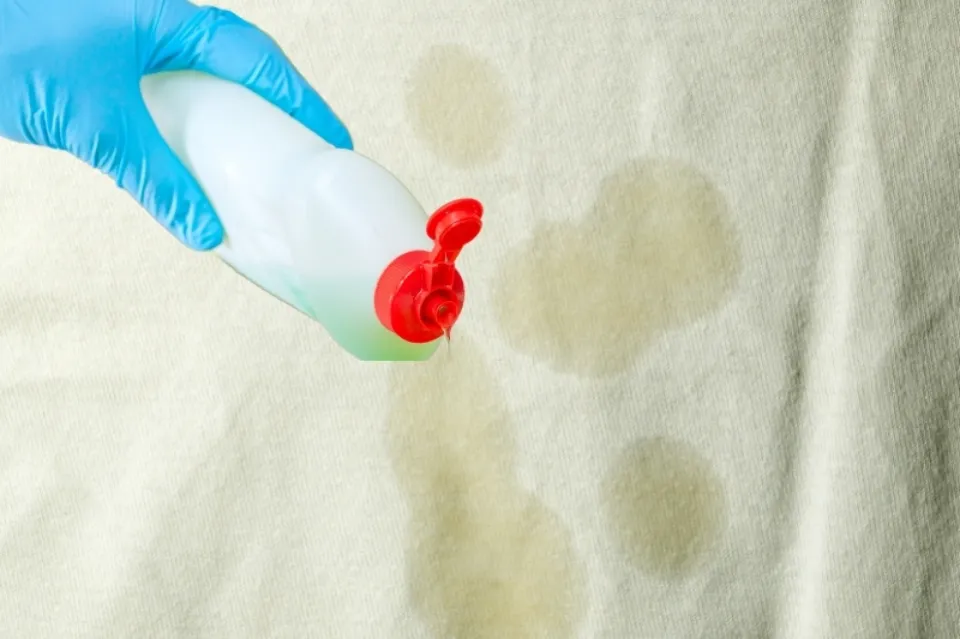
Vaseline stains can also be effectively removed by soaking them in potent isopropyl alcohol. While it takes a little longer, this method requires less scrubbing.
Petroleum jelly is insoluble in water but partially soluble in the majority of alcohols, which means the fat lipids can dissolve in alcohol, which is why it works. This is why many stain-lifting laundry detergents also contain some type of alcohol!
However, rubbing alcohol treatment may cause some non-colorfast fabrics to bleed color.
Prior to attempting this method, make sure you spot-test! Just add a tiny drop of alcohol to the seam allowance on the inside of your garment. Ten minutes later, check to see if the fabric has changed color.
There are two ways to apply isopropyl alcohol to a Vaseline stain. For a small stain:
- To prevent grease from escaping and harming other parts of the garment, place something absorbent, such as a folded paper towel, behind the stain.
- Clean cotton ball should be soaked in alcohol.
- Apply the cotton ball to the spot. To prevent spreading any grease, move from outside the stained area to inside.
- When the fabric has been thoroughly saturated with alcohol, keep doing this.
- Wait five minutes before using it.
- Rinse completely with cool running water. Consider switching right to the dish soap method if you still notice discoloration.
For a bigger stain, you can try soaking the stained part of the garment in a container of alcohol
- Create a flat workspace and use a disposable object, such as a plastic cup. Isopropyl alcohol should fill half of the cup.
- The rest of the garment should be able to comfortably rest on the flat surface next to the cup as you submerge the stained portion of the garment in the cup.
- Give it ten minutes to sit.
- Use a clean rag to scrub the stain.
- Remove the alcohol with water, then allow the clothing to air dry.
- Examine whether the stained area is still discolored or if the grease has completely disappeared.
3. Vinegar
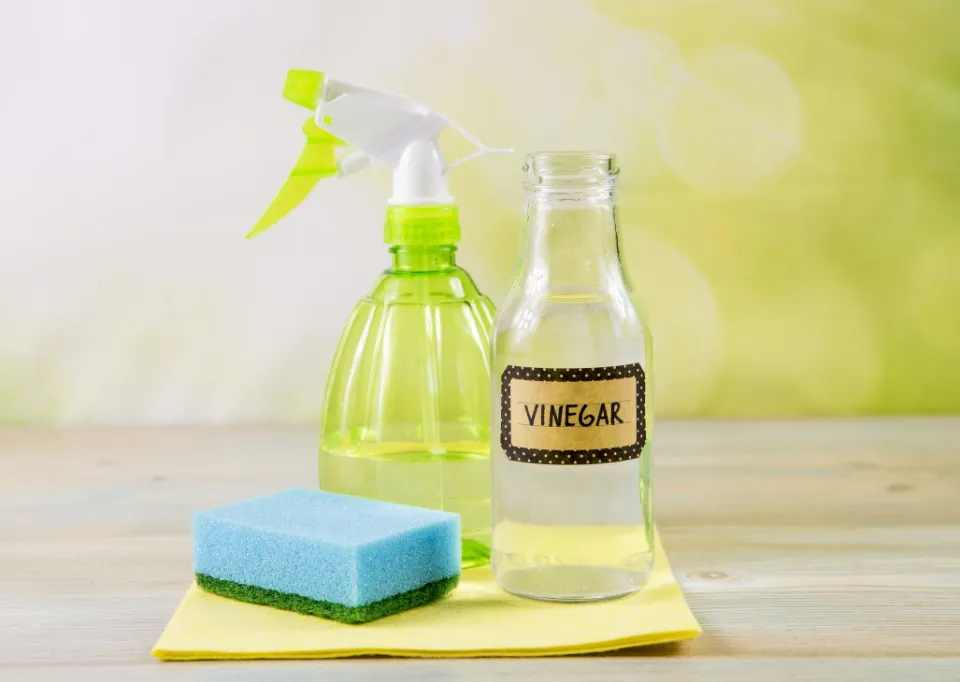
The gentlest, least chemical method for removing Vaseline stains from clothing is vinegar and baking soda. Like using dish soap, this technique is not 100 percent effective. However, it does offer a gentle alternative ideal for those with sensitive skin or a method to work on delicate fabric that can’t withstand stronger products.
Vinegar shouldn’t damage the majority of fabric types, in contrast to rubbing alcohol. In order to remove the pickle smell from the fabric after trying this, you’ll need to wash your clothes.
- Equal parts of distilled white vinegar and water are combined in a bucket.
- Put your clothing in this solution and let it soak for a minimum of ten minutes.
- The stained area should be facing up as you remove the garment from the water, press some liquid out of it, and spread it flat on a fresh towel.
- The stain should be treated with a spoonful of baking soda.
- Use your fingers or a soft brush to gently rub it into the fabric. The fabric will be abraded by baking soda, which will remove the oil particles that vinegar had already loosened.
- Last but not least, wash the garment in cool running water.
- It can be cleaned as usual in the washing machine; the dryer should not be used. Instead, let the item air dry so you can check it once it’s finished drying to make sure all of the grease is gone.
Summary
It’s simple to remove vaseline from clothing. The above-mentioned steps must be carried out, and they may need to be repeated, if necessary. Vaseline stains are one type of stain, but they’re not the only ones to watch out for. Food, alcohol, rust, and other substances can stain your clothing., and you have to get rid of them too.
The stain gets harder to remove from clothing the longer it is left in place. You can also use a hot iron to melt Vaseline or common household items like vinegar, rubbing alcohol, or dish soap.
FAQs
How Do You Get Vaseline Stains Out of Clothing?
To attempt to absorb any lingering oil, sprinkle cornstarch or baby powder on the stain. A minimum of 20 to 30 minutes should pass before using. Use the previously described procedure to apply laundry detergent or stain remover, gently rub it into the area, and then let it sit for at least 15 minutes.
What Will Remove Petroleum Jelly?
Apply rubbing alcohol to a white cotton ball, white paper towel, or clean white cloth. Use a blotting motion if the stain extends deep into the pile until it is gone or the cloth doesn’t pick up any color. The latex bond will be destroyed if the alcohol is allowed to seep into the backing.
Why is So Hard to Wash Off?
Due to the fact that Vaseline is not water-soluble.
How Do You Remove Petroleum from Fabric?
Most people find that WD-40 works best when applied with cotton swabs and sprayed into a bowl, being careful not to let the oil stain through to the garment’s reverse. The stain should then be removed by repeatedly brushing/scrubbing it with baking soda, treating it with dishwashing liquid, and washing and drying the item as usual.





Average Rating